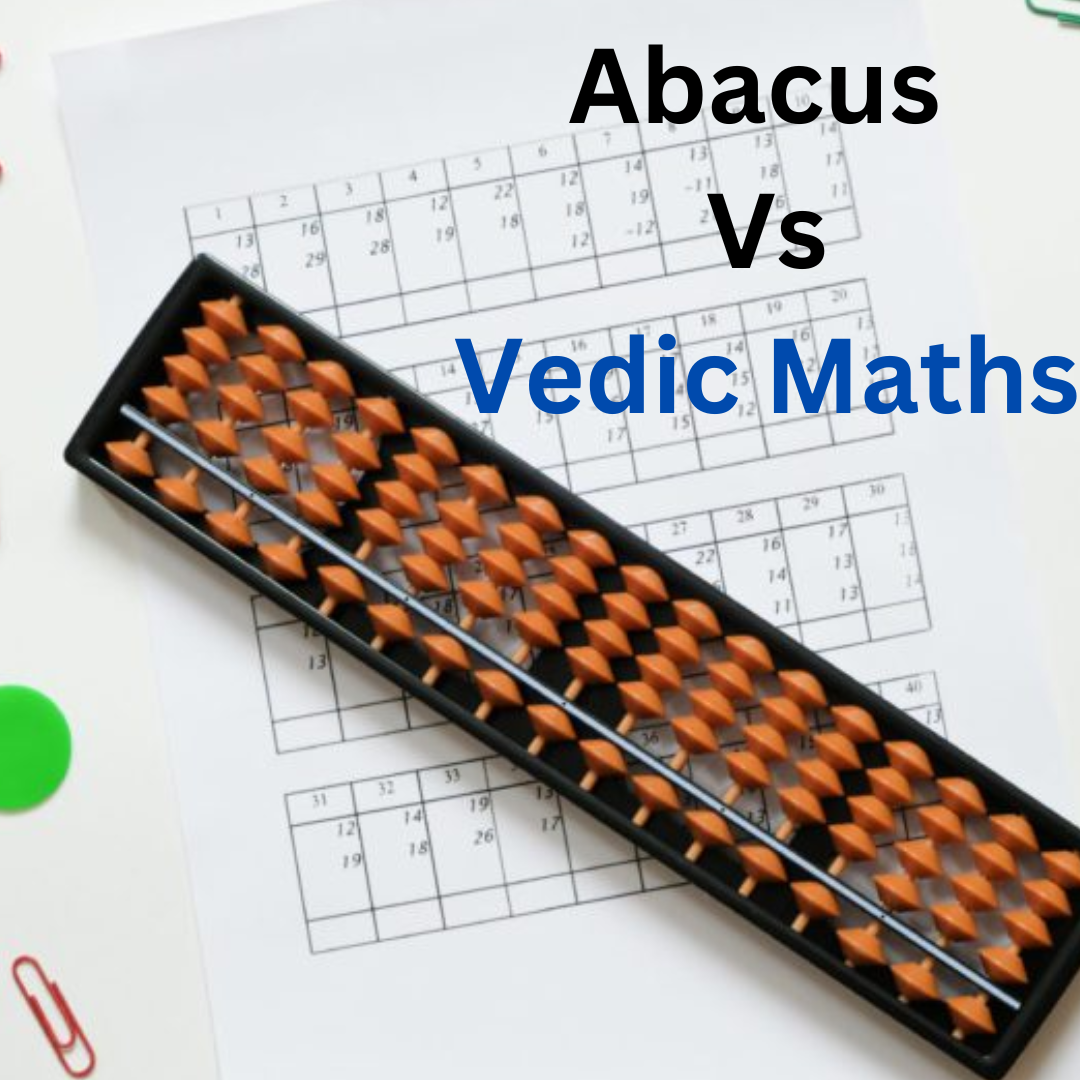
Abacus vs Vedic Math? Which is the Right Method for You?
Explore Abacus vs Vedic Math to decide the best method for improving mental math skills. Discover their benefits, suitability, and applications in learning.
Mental math is a foundational skill that can empower children and students to excel in academics and navigate daily life with confidence.
Two popular approaches to enhancing these skills are the Abacus and Vedic Math methods.
But which one should you choose? Let’s dive deep into Abacus vs Vedic Math blog, and find out their benefits, applications, and suitability to help you make an informed decision.
Why Mental Math Skills Matter for Kids and Students
Mental arithmetic plays a crucial role in both academic success and real-world problem-solving.
A strong mental math foundation enhances cognitive abilities and builds confidence in handling numbers, whether in a classroom setting or everyday tasks like budgeting and shopping.
Learning the best math learning methods for kids such as the Abacus or Vedic Math has several benefits:
- Improves cognitive skills:Both methods stimulate brain activity, enhancing memory and analytical thinking.
- Boosts academic performance:Quick and accurate calculations give students an edge in subjects requiring numerical expertise.
- Check and Defending Check:We explored how to check the king and defend the king from check.
- Encourages lifelong learning: Developing a love for numbers at an early age fosters curiosity and resilience in tackling challenges.
What is the Abacus Method?
Overview of Abacus Learning
The Abacus, a centuries-old tool, is one of the earliest devices used for calculations. Originating in Mesopotamia and refined in Asia, the Abacus remains a powerful tool for developing mathematical skills.
Abacus learning involves manipulating beads on a frame to represent numbers.
These touchable and visual math learning tools for kids grasp arithmetic calculations like addition, subtraction, multiplication, and division.
Benefits of the Abacus
Let us check out Abacus benefits for kids:
- Improves concentration and visualization:Manipulating beads enhances focus, as students must mentally picture the Abacus when solving problems without the physical tool.
- Develops a strong foundation in arithmetic:Abacus learners gain a deep understanding of basic math concepts, which prepares them for advanced studies.
- Enhances speed and accuracy:Regular practice allows students to perform calculations rapidly and with precision, an essential skill for competitive exams.
What is Vedic Math?
Introduction to Vedic Math
Vedic Mathematics, rooted in ancient Indian texts, is a system of mathematical principles and techniques.
It simplifies calculations through a set of sutras (formulas) and sub-sutras that can be applied to a wide range of problems.
Unlike conventional methods, Vedic Math emphasizes mental strategies, enabling students to solve problems quickly and intuitively.
Benefits of Vedic Math
- Encourages creativity in problem-solving:By presenting multiple ways to approach calculations, Vedic Math fosters innovative thinking.
- Boosts confidence in handling numbers:Mastery of Vedic Math techniques for beginners empowers them to tackle complex problems with ease.
- Ideal for competitive exam preparation:Its focus on speed and accuracy makes Vedic Math invaluable for exams like SATs, GRE, and other standardized tests.
Abacus vs Vedic Math: A Detailed Comparison
Below we will discuss the Abacus and Vedic Math comparison in-depth:
Learning Approach
- Abacus:This method emphasizes hands-on learning, using a visual and touchable tool to perform Abacus for faster calculations. It’s particularly effective for young learners who benefit from physical interaction.
- Vedic Math:Focused on conceptual understanding, this approach uses mental strategies and formulas, making it suitable for students who prefer abstract learning.
Age Suitability
- Abacus: Best suited for young children aged 4–14, as it aligns with their developmental stage and learning style.
- Vedic Math:Ideal for older students aged 3-12, who can comprehend and apply its advanced techniques.
Practical Applications
- Abacus:Primarily used for basic arithmetic operations, making it a great choice for early learners.
- Vedic Math: Extends beyond arithmetic to include algebra, geometry, and calculus, making it versatile for higher education and advanced problem-solving.
Long-Term Benefits
- Abacus: Develops focus, discipline, and a strong mental image of numbers, which benefits learners in all areas of life.
- Vedic Math: Equips students to excel in advanced mathematics and fosters a problem-solving mindset.
How to Decide the Right Method for Your Needs
Choosing Abacus vs Vedic Math depends on factors like age, learning goals, and personal interest.
For young children, the Abacus training programs provide a structured and engaging way to build foundational skills.
For older students, Vedic Math offers the speed and versatility needed for academic and competitive success. In some cases, combining both methods can yield optimal results.
For instance, students can learn Abacus for faster calculations, and transitioning to Vedic Math for advanced techniques can create a well-rounded math skillset.
Also Read: Top 5 Abacus Classes in Mumbai That Parents Highly Recommend
Conclusion
As we have gone through Abacus vs Vedic Math, we see that instead of choosing between Abacus and Vedic Math, combine and use both methods to improve mental math skills and learn advanced techniques.
While the Abacus focuses on hands-on, visual learning for young learners, Vedic Math emphasizes abstract, formula-based thinking for older students.
Understanding their differences and benefits will help you choose the right method or combination to meet your needs.
Whether you’re building foundational skills or preparing for competitive exams, both approaches can unlock the full potential of your mathematical abilities.
